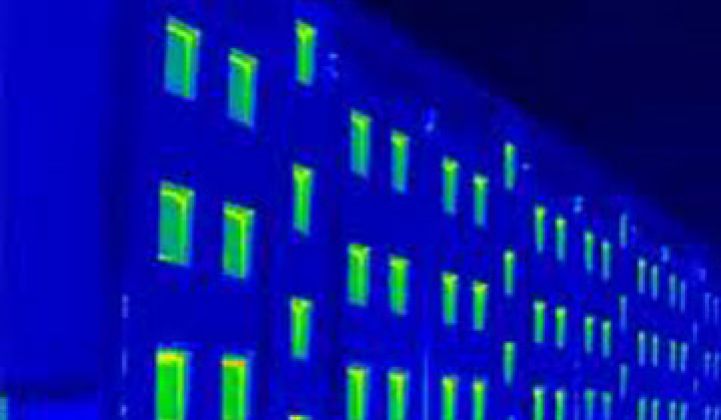Back in November, Russ McMeekin, CEO of building management specialist Scientific Conservation Inc., told us that the company's goal for 2011 was to expand the amount of commercial real estate it controlled from 15 million square feet to a whopping 100 million to 150 million square feet.
Now we know how it will happen. Intel today said it will work with the company to improve the efficiency of its various campuses and buildings. Intel Capital and General Electric, which earlier said it would work with SCI on some of its buildings, also became investors in an expanded Series B funding announced in January. The increase raised the round of funding from $15.65 million to $19 million.
The endorsement from the two industrial giants could help create some space between SCI and its many competitors in the potentially lucrative, but increasingly crowded, field of commercial building management.
The company has created software that figures out what is wrong with your office building by looking at data from thermostats, air conditioners, carbon monoxide sensors, the building management system and other sources. It then sends out commands to adjust thermostats or replace compressors or other devices on the verge of failure -- the more data, the better. The underlying algorithms exploit neural networks and diagnostic techniques developed in part during the creation of the Space Shuttle. (Kids: that was a reusable spacecraft that came out around the same time as the tabletop version of Donkey Kong.)
While SCI will analyze your building's problems, it won't fix them. It won't even actively turn down the lights or HVAC system. It leaves that job to the maintenance staff and building management system. Still, remote, automated analysis can save quite a bit of money. Right now, companies often have to hire consultants to get the same results, and the process can take weeks. McMeekin analogizes his company's software to TurboTax. It might not provide the same exact answer as a professional accountant, but 90 percent of the time, the answer will be nearly the same and the cost spent on third-party help will be a lot less.
Other customers include Boeing and Neiman Marcus. General Electric alone has 32,000 different facilities. SCI may not find its way into all of GE's or Intel's buildings, but even a portion would represent a lot of real estate.
Other companies -- EnerNoc, Serious Materials, BuildingIQ, Cimentrics, Redwood Systems, General Telemetry -- make the case that their management services provide automated, continuous responses similar to what Scientific promises. (If we had a live lab, we'd test them all out.) All of these competitors also say that they will provide increasingly automated control over appliances like air conditioners or lights, a function Scientific is punting on for now. All of these systems will ultimately get plugged into demand response networks too, so companies like Constellation, EnerNoc and Comverge can parlay their existing account base to gain market share.
There are other competitors in the industry you likely haven't even heard of. Mike Dauber at Battery Ventures, who invests in this space, says that there are building management software companies scattered about the country. Some in Silicon Valley have also begun to take their IT skills to building automation. Another source recently told us to check out enLighted, fronted by alums from NewPath Ventures, Cisco and Osram.
Who will win? Who knows? There are even companies like Transcend Energy to consider: Transcend agrees to pay your utility bill if you let them retrofit your building for efficiency. But with 20 percent of U.S. energy getting consumed in commercial buildings, and much of that energy getting consumed in inefficient ways, this promises to remain one of the more active segments in greentech.



